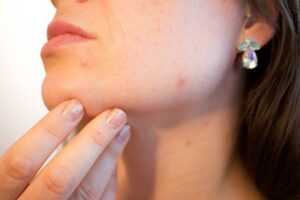We know that bacteria and other microorganisms are found in the rarest of the places, but have ever wondered if they are present in/or your body?
Well yes, they are. These microscopic organisms are present on both the insides and outside of our bodies. Not to forget, they serve a significantly important purpose, i.e., protection.
Talking about the human body, our skin is the largest organ. It acts as a shield and protects the inner organs from physical injuries as well as microbial infections. Thus, it becomes absolutely important to protect it against external stress.
While we do what we can to ensure the integrity of our skin, nature does its part. Our skin has a natural ecosystem where microbial colonies exist just like the ones in your gut. Even though they are not perceptible to the naked eye, they are quite present on the surface of the dermis. These invisible organisms like fungi, bacteria, and viruses are known as the skin microbiome. Let us get to know it a little.
Definition: Skin Microbiome
The term “skin microbiome,” also known as “skin flora,” is referred to the trillions of bacteria that lives on our skin. There are more than 1,000 bacterial species (approx.) and up to 80 fungal species. Some of them, such as Staph, Strep, and Candida species, are also found in your gut flora. There are a few Bifidobacterium and Lactobacillus species found on the skin, but not as many as inside the gut.
The concept of the skin as an ecosystem, with living biological and physical constituents inhabiting various habitats, can help us better understand the delicate balance between host and microbe. Skin problems or infections can result from imbalances on either side of the equation.
Endogenous (for example, genetic variation that selects for a specific microbial population) or exogenous (for example, environmental factors that affect the host–microorganism connection) perturbations can affect the host–microorganism relationship (for example, hand washing).
The physical as well as chemical characteristics of the skin attract particular bacteria that are well-suited to the niche in which they reside. The skin is chilly, acidic, and dehydrated in general, although different habitats are dictated by skin thickness, folds, hair follicles, and gland density. The epidermis is a powerful physical barrier that resists germs and harmful poisons while conserving moisture and nutrients within the body.
What makes up the microbiome of the dermis?
The stratum corneum is the top layer of the epidermis. It is made up of terminally differentiated, enucleated keratinocytes which are known as squames. Squames are the ‘bricks and mortar’ of the epidermis, consisting of keratin fibrils and crosslinked, cornified envelopes contained in lipid bilayers. Squames are regularly shed from the skin’s surface because it is a self-renewing organs.
The diversity of organisms revealed by genomic approaches to characterise skin bacteria is far more than that disclosed by culture-based methods. Most skin bacteria are classified into four phyla based on 16S ribosomal RNA metagenomic sequencing: Actinobacteria, Firmicutes, Bacteroidetes, and Proteobacteria.
Dermatologists and microbiologists have long been interested in the microorganisms that colonise the skin; until recently, our knowledge of these bacteria was primarily on culture-based investigations.
Non-bacterial microbes have also been isolated from the surface of the skin. Malassezia spp., which are notably frequent in sebaceous areas, are the most usually isolated fungal species.
Molecular techniques for assessing bacterial diversity have confirmed that the skin microbiota is reliant on the body site. They have also advised that caution should be practiced when choosing or comparing sites for the research of skin microbiome.
7 things to know about the skin microbiome
We know the importance of skin microbiome and its significant functions to the body. However, there are certain points most of us are unfamiliar about. Below are the 7 not-so-common facts about skin microbiome.
1. It communicates with the immune system
Our microbiome was formerly assumed to exist exclusively on the surface of the skin, with the deeper dermal layers being sterile. That is no longer the case. In 2013, researchers looked deep into the dermis for microorganisms, finding them all the way down to the subcutaneous fat layer. While additional research is needed, it appears that the most intimate connection between the microbiome and the human immune system occurs at this layer, according to the researchers.
2. It protects against infection
According to our findings, a healthy skin microbiome protects against illness in the same way as a healthy gut microbiome does: by selecting out harmful organism overgrowth. The microbiota of the skin loves an acidic environment (pH is around 5.0) which also restricts the growth of pathogens.
3. It tempers with inflammation
The microbiome and immune system of the skin “interact” with each other on a daily basis, reducing inflammation. When the microbiome is absent, the immune system can assist in restoring equilibrium. It does this by releasing antimicrobial peptides like cathelicidin. Similarly, our friendly bacteria can prevent the immune system from releasing inflammatory chemicals.
4. Protect yourself from illness
Some bacteria have the ability to behave as natural antibiotics. They also help to keep your skin acidic, which is beneficial to many microorganisms. Hence, providing protection by maintaining the pH of the skin.
5. Heal wounds and keep inflammation under control
Your immune system can be activated or deactivated by signals from your skin microbiota. This promotes healing and reduces dangerous inflammation.
6. It is present right from your childhood
Your “core microbiota” is a compilation of microorganisms found in your skin on a regular basis. Early in infancy, at the age of three, these bacteria become quite stable. They can, however, change.
7. It defends us from environmental threats
In addition, the microbiome aids wound healing, reduces allergen exposure, reduces oxidative damage, and keeps the skin plump and moist. It is true that new research indicates that it can shield and protect humans from the sun’s dangerous UV radiation. According to a study, mice harbouring the bacteria Staphylococcus epidermidi formed considerably fewer cancers when exposed to UV rays than mice without it.
What will be the result if the skin’s microbiome is disrupted?
The idea that antibiotics, other medications, and a bad diet can harm the gut flora is undoubtedly a fact to you. This is called as the “hygiene hypothesis,” and it is proved by a large body of evidence.
Your microbiota can change in unfavourable ways. Dysbiosis is the term used for this type of imbalance. However, it is unclear why this occurs. Nevertheless, it has been related to a number of health issues, including:
- Eczema (atopic dermatitis)
- Psoriasis
- Acne
- Rosacea
- Wounds that don’t heal
Vitiligo, albinism, dandruff, toenail infections, and warts are all disorders that the skin microbiome is being studied for.
What can maintain your skin’s natural microbiome?
Topical biotics, such as pre-, pro-, and postbiotics, are a burgeoning field of study. Many businesses have launched products and collections aimed at nourishing the skin’s microbiota. These substances work in a variety of ways to support the barrier and nurture a healthy microbial community, though to different degrees.
One among those amazing compounds is the GENENCARE® XL (a highly purified form of Xylitol) which nurtures and supports the skin microbiome. It decreases the production of skin-harming microbes and enhances the multiplication process of skin-protecting microbes.
It is observed that GENENCARE® XL (INCI: Xylitol) works in favour of S. epidermidis and S. aureus. Subsequently, supporting their colonization for better skin protection and microbiome profile. Not only does this compound aids the microbial profile of the skin but also provides various other benefits to keep it healthy and youthful.
Following are the benefits of GENENCARE® XL (INCI: Xylitol)
- It promotes the microbial profile of S. epidermidis and S. aureus when added during the early phase as well as the late growth phase.
- It helps in maintaining microbial diversity of the skin.
- It helps maintain skin hydration.
- It contributes to skin moisturisation.
- Its application provides a cooling sensation so as to calm down the skin.
- A more sustainable version of xylitol.
- It is derived from upcycled wood pulp side stream collected from EU.
- It is 100% natural and vegan.
The Bottom Line
Your skin microbiota is both powerful and fragile. Examine your topicals, your lifestyle, and your gut microbiota health to ensure you are not accidentally harming its function.
With each passing year, we become more aware of the significance of our skin microbiota to our general health. It not only improves the appearance of our skin, but it also protects our bodies. If you want to ensure that your microflora thrives, avoid harsh products and keep your skin hydrated.




